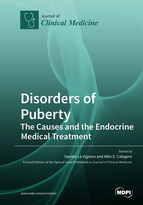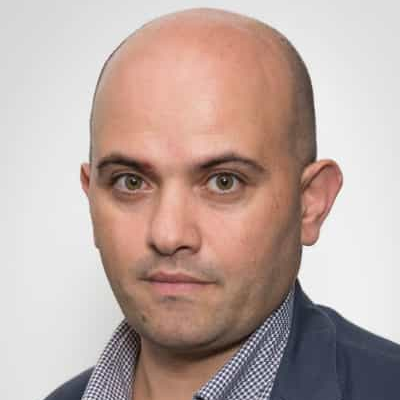Disorders of Puberty: The Causes and the Endocrine Medical Treatment
A special issue of Journal of Clinical Medicine (ISSN 2077-0383). This special issue belongs to the section "Endocrinology & Metabolism".
Deadline for manuscript submissions: closed (30 November 2019) | Viewed by 55680
Special Issue Editors
Interests: male infertility; female infertility; osteoporosis; transitional age; diabetes; thyroid gland; male and female sexual disorders; neuroendocrine tumors
Special Issues, Collections and Topics in MDPI journals
Interests: endocrinology of reproduction and sexuality
Special Issues, Collections and Topics in MDPI journals
Special Issue Information
Dear Colleagues,
Male idiopathic infertility is highly spread world-wide. Meta-regression studies provide evidence for a major decrease of conventional sperm parameters with age. The reasons for this decline are not well-understood, and therefore research into its causes is urgently needed. Since pubertal disorders may hide abnormal Sertoli cell (SC) function, the early detection of these abnormalities might help to prevent male idiopathic infertility. Therefore, the aim of the present Special Issue is to deeply examine the physiology of gonadal and sexual differentiation, minipuberty, GnRH neuron and SC function, as well as the physiopathology of disorders of sex development (DSD), and to provide an updated overview of the etiology and treatments that are currently available for delayed and precocious puberty. Diagnostic strategies for the early diagnosis of pubertal disorders and the assessment of testicular function in childhood and transitional age will also be discussed. In summary, andrological counseling should take place early in life. This practice might help to slow down the temporal decline in sperm concentration and count.
Prof. Dr. Sandro La Vignera
Prof. Dr. A.E. Calogero
Guest Editors
Manuscript Submission Information
Manuscripts should be submitted online at www.mdpi.com by registering and logging in to this website. Once you are registered, click here to go to the submission form. Manuscripts can be submitted until the deadline. All submissions that pass pre-check are peer-reviewed. Accepted papers will be published continuously in the journal (as soon as accepted) and will be listed together on the special issue website. Research articles, review articles as well as short communications are invited. For planned papers, a title and short abstract (about 100 words) can be sent to the Editorial Office for announcement on this website.
Submitted manuscripts should not have been published previously, nor be under consideration for publication elsewhere (except conference proceedings papers). All manuscripts are thoroughly refereed through a single-blind peer-review process. A guide for authors and other relevant information for submission of manuscripts is available on the Instructions for Authors page. Journal of Clinical Medicine is an international peer-reviewed open access semimonthly journal published by MDPI.
Please visit the Instructions for Authors page before submitting a manuscript. The Article Processing Charge (APC) for publication in this open access journal is 2600 CHF (Swiss Francs). Submitted papers should be well formatted and use good English. Authors may use MDPI's English editing service prior to publication or during author revisions.
Keywords
- gonadal differentiation
- sex development
- Sertoli cells
- IGF1
- AMH
- pubertal disorders
- delayed puberty
- precocious puberty








